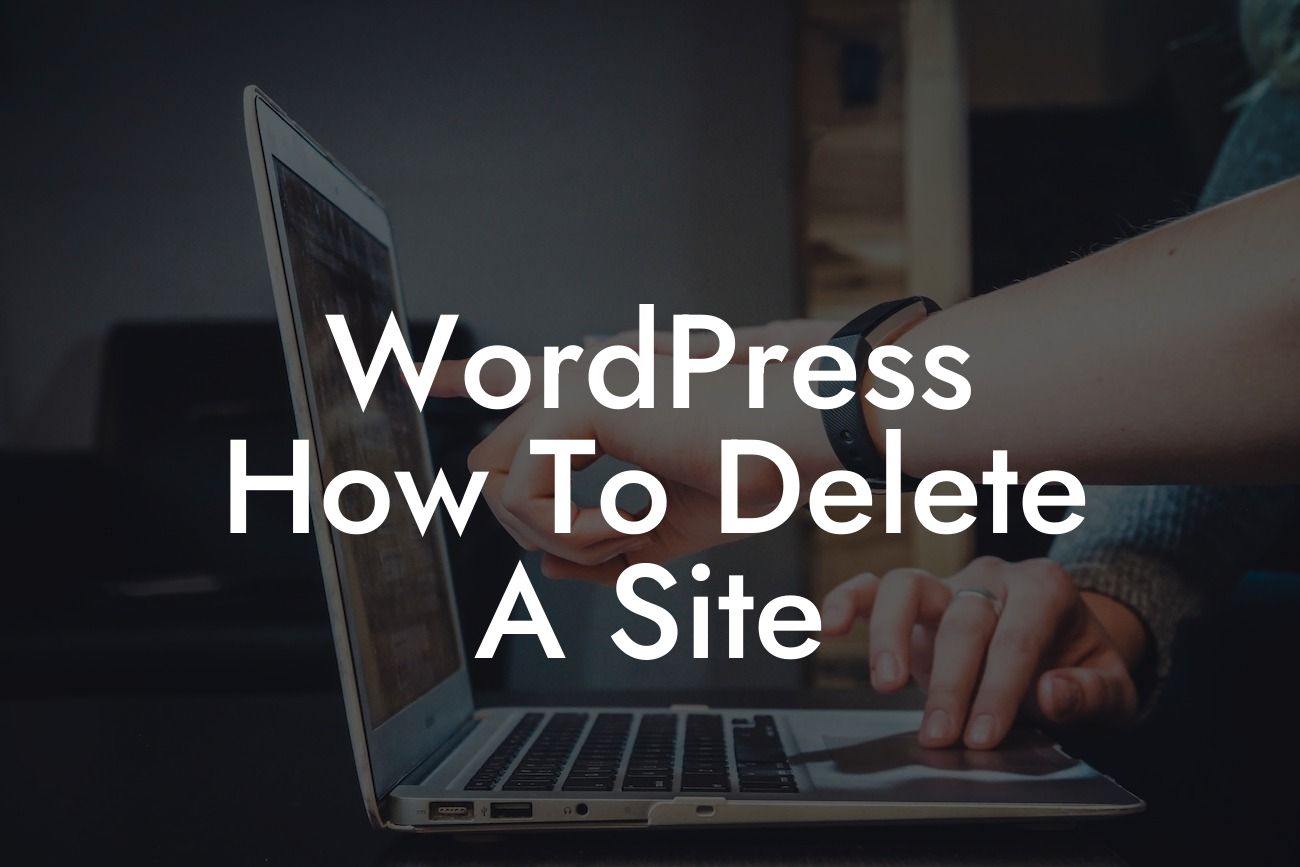Deleting a site on WordPress might sound intimidating, but fear not! With the right guidance, you can easily remove unwanted websites and streamline your online presence. In this guide, we will walk you through the step-by-step process of deleting a site on WordPress. Whether you're a small business owner or an aspiring entrepreneur, DamnWoo is here to supercharge your success. Get ready to say goodbye to outdated, irrelevant websites and embrace the extraordinary!
To delete a site on WordPress, you need to follow these simple yet effective steps:
1. Back up your data: Before taking any action, it's crucial to back up your site's data. This includes your website content, media files, and any important plugins or themes you want to preserve. By doing so, you can have peace of mind knowing that you won't lose critical information during the deletion process.
2. Deactivate plugins and themes: Navigate to your WordPress dashboard and go to the "Plugins" section. Deactivate any plugins that are specific to the site you want to delete. Similarly, head over to the "Themes" section and switch to the default WordPress theme to ensure a smooth deletion process.
3. Remove unwanted content: Next, remove any unnecessary content from the site you wish to delete. This includes blog posts, pages, media files, and comments associated with that particular site. By tidying up your content, you can declutter your WordPress dashboard and make the deletion process easier.
Looking For a Custom QuickBook Integration?
4. Access the site's settings: In your WordPress dashboard, find the "Settings" tab and click on it. Look for the "General" section, where you'll find the address or URL of the site you want to delete. Take note of this URL for the next step.
5. Delete the site through your host's control panel: Now that you have the site's URL, log in to your hosting provider's control panel. Locate the option to manage your websites or domains, and find the specific site you wish to delete. Click on it, and then choose the option to delete or remove the site from your hosting server.
Wordpress How To Delete A Site Example:
Let's consider an example to illustrate the process. Imagine you have a small e-commerce business and want to delete an outdated website that is no longer in use. By following the steps outlined above, you can successfully remove the unwanted website and declutter your online presence. Remember to back up your data, deactivate plugins and themes, remove unwanted content, access the site's settings to get the URL, and finally delete the site through your hosting provider's control panel.
Congratulations! You have successfully learned how to delete a site on WordPress. By taking this crucial step, you can optimize your online presence and focus on what truly matters: the growth of your business. But why stop here? Explore other informative guides on DamnWoo to enhance your WordPress experience and take advantage of our awesome plugins. Join the DamnWoo community and embrace extraordinary success today! Don't forget to share this article to help others master WordPress and make the most out of their online ventures.













